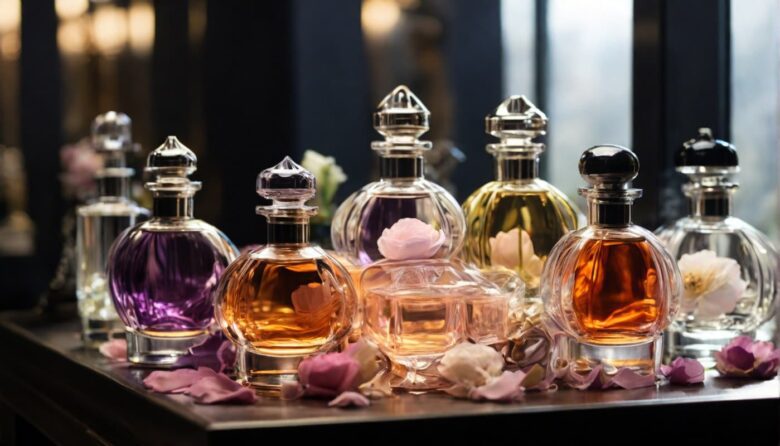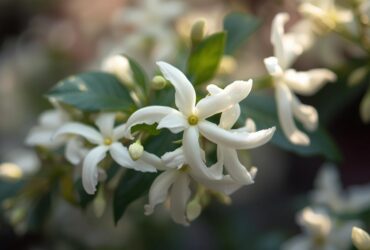Perfume layering, also known as fragrance cocktailing, is an artful method of mixing different scents to create a unique, personalized fragrance. This technique allows individuals to express their style and mood, adapting their scent to different occasions, seasons, or times of day. In this comprehensive guide, we will explore the nuances of perfume layering, offering practical tips and creative ideas to help you master the craft and develop your signature scent.
Understanding the Basics of Perfume
Before diving into layering, it’s essential to understand the structure of perfumes. Fragrances are typically composed of three notes:
- Top Notes: These are the initial scents that hit the nose immediately after application but evaporate quickly. Common top notes include citrus (lemon, grapefruit) and light fruits (berries, peaches).
- Middle Notes: Also known as heart notes, these emerge just before the top notes dissipate. They are considered the heart of the perfume, usually floral or spicy scents like jasmine, rose, or cinnamon.
- Base Notes: These are the heavier, long-lasting fragrances that linger after the top notes have faded. They form the foundation of the perfume and are typically rich and deep, such as musk, vanilla, or amber.
Understanding these notes is crucial as they affect how fragrances will interact when layered.
The Art of Layering Perfumes
Layering perfumes involves combining different fragrances to produce a unique scent. Here are some steps and tips to guide you through the process:
- Start Simple: Begin with two perfumes. It’s easier to understand how different scents interact when you limit the variables.
- Choose Complementary Scents: Fragrances that share similar notes or olfactory families (like floral, woody, citrus, etc.) usually blend well. For instance, a vanilla-based scent (sweet) can beautifully complement a floral one.
- Consider Intensity and Longevity: Balance lighter scents with stronger ones. A light citrus scent can be enhanced with a deeper woody or spicy base note.
- Test on Paper Strips: Before applying on your skin, spray different fragrances on separate blotter papers. Place them together to see how they combine. This step helps you avoid unpleasant combinations.
- Apply in Layers: When you find a combination you like, apply the stronger scent first and the lighter one on top. This method allows the top notes of the lighter fragrance to shine through initially, with the deeper base notes providing lasting power.
- Adjust Quantity: Use less of each fragrance than if you were wearing it alone. Perfume layering is about balance and subtlety.
- Experiment with Placement: Apply different scents to different parts of the body. For example, spray a floral fragrance on your wrists and a musky scent on your neck.
- Keep Track of Combinations: Record your experiments and their outcomes. Note which combinations work and which do not, including how they make you feel. This record will be a valuable reference as you continue to explore perfume layering.
Creative Combinations to Try
To get you started, here are some tested combinations that often yield delightful results:
- Floral + Woody: Combine a light floral scent with a rich woody one to create a balanced, sophisticated profile. Example: Rose with Sandalwood.
- Citrus + Spicy: A fresh, zesty lemon or bergamot pairs well with warm spices like cinnamon or cardamom, ideal for transitioning from day to evening.
- Aquatic + Citrus: For a refreshing, invigorating
scent, layer an aquatic fragrance with a citrus one. This combination is perfect for daytime wear, especially in warmer months.
- Gourmand + Floral: Mix a sweet, edible-smelling perfume with a floral one to add complexity and depth. Vanilla and lavender is a popular choice, offering a comforting yet sophisticated aroma.
- Oriental + Woody: Combine an oriental fragrance (characterized by notes like incense, spices, and resin) with a woody scent for a rich, enveloping fragrance. This pairing is particularly suited for colder months or evening events.
Advanced Techniques in Perfume Layering
As you become more comfortable with basic layering, you can explore more complex combinations and techniques:
- Cross-Application: Apply different fragrances to different parts of your body and clothing. For instance, spray a light floral on your scarf and a deeper, spicy scent on your wrists. The interaction between these scents as you move creates a dynamic fragrance experience.
- Seasonal Layering: Adjust your fragrance combinations with the seasons. Lighter, fresher combinations work well in spring and summer, while richer, deeper combinations are ideal for fall and winter.
- Mood-Based Layering: Choose your scents based on the mood or atmosphere you wish to evoke. For a romantic evening, you might choose sensual floral and musk. For a high-energy business meeting, a sharp citrus and woody combination could be empowering.
- Custom Blends: Once you’re confident, start mixing fragrances directly by decanting them into a new container. This step is for the experienced layerer, as it requires a deep understanding of how different notes and concentrations interact over time.
Practical Considerations
While perfume layering is a creative and enjoyable activity, there are practical considerations to keep in mind:
- Skin Sensitivity: Always be aware of how your skin reacts to different perfumes, especially when applying multiple products. If irritation occurs, discontinue use.
- Sillage and Intensity: Be mindful of the combined strength of layered perfumes. It’s easy to over-apply when layering, so start with small amounts to avoid overwhelming yourself and others.
- Cost: Layering can involve using more perfume than usual, which might be a consideration if you’re using very expensive or rare fragrances.
- Compatibility: Not all perfumes are meant to be layered. Some are complex enough on their own and might not play well with others. Always test before committing to a full day’s wear.








Leave a Reply